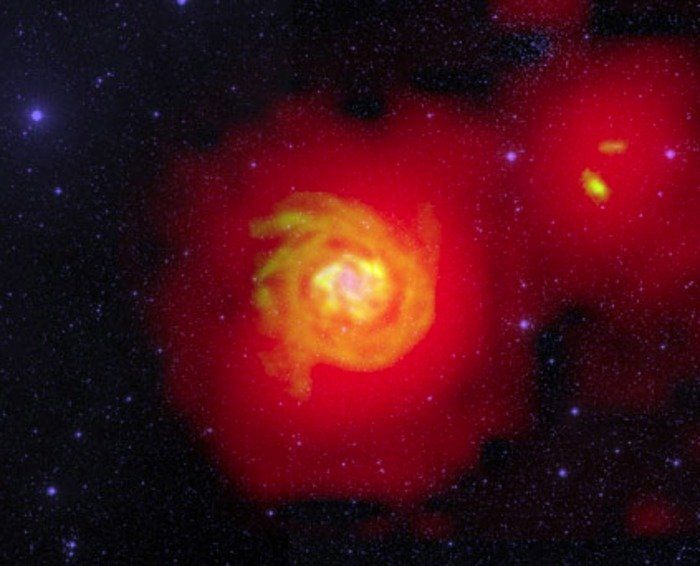GREEN BANK, W.Va., Jan. 28 (UPI) -- A never-before-seen river of hydrogen flowing in space may help explain how some spiral galaxies keep up a steady pace of star formation, a U.S. scientist says.
Astronomer D.J. Pisano, using the Green Bank Telescope in West Virginia, discovered the very faint, very tenuous filament of gas streaming into the nearby galaxy NGC 6946, the National Radio Astronomy Observatory reported Tuesday.















